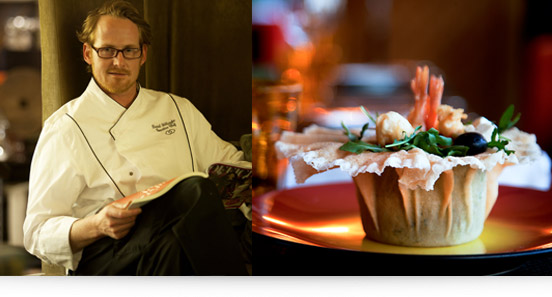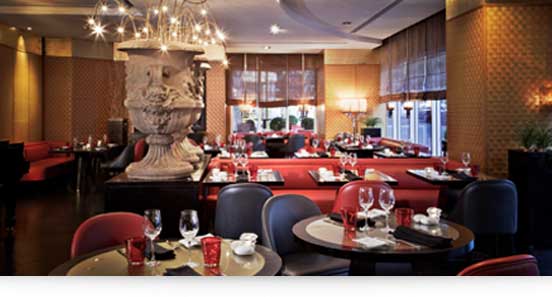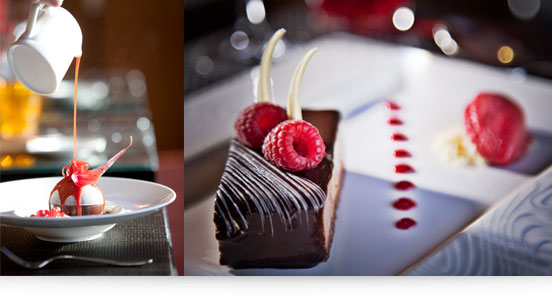
From the mountains of Bavaria to the beaches of Portugal, Daniel Schlaipfer worked in restaurants all across Europe learning the tricks of his trade, until he developed his very own cuisine, a fusion of Northern and Southern influences, which you can discover at AdLib, the Sofitel Lisbon Liberdade’s restaurant where he is now the Executive Chef.
You’re a German chef, living in Lisbon and cooking for international guests. What culinary experiences led you to this?
It all began in my home town, Garmish-Partenkirchen, which is a ski resort 70km from Munich. As you know, it’s close to Austria and we share the same taste for regional, seasonal products: mushrooms and Brussel sprouts in the winter, white asparagus and rhubarb in the spring, etc. This local cuisine, which is also what my mother cooked, has always been very important for me.
So much so that you decided to make a profession of it?
Yes, but the education system also played a part in my decision. In Germany, you are asked to choose a profession and must spend three years learning your trade in a company. I chose cooking. After three years, you’ve learnt the basics. If you’re still around, then you’re made for this job!
Then you decided to country hop. Why these many stages in your career?
At the time (Editor’s note: in the 1990s), we didn’t have Internet or YouTube to learn from yet. The only way of training with others was to work in many restaurants. I started in Fuerteventura, in the Canaries, because there was a German chef there who I’d worked with one season. Then I went to Saint-Moritz in Switzerland, where I spent two years and learnt a lot from their methods. In those days, I led a bohemian existence, working one season while preparing CVs to find another job somewhere else.
What did you glean from this bohemian life?
I learnt how important it is to work with different chefs, because they all have their own way of cooking. When you arrive, you think you know how to do something, but you discover that the chef achieves the same result with a completely different technique. Cooking is like haute-couture, first you have to gather the information before you find your own way of doing things. Every season also has its trends.
How did you develop your own style?
When I came to Portugal in 2003, I worked for a French chef, Antoine Westermann. It was the days of sous-vide (under vacuum) cooking and I discovered that the things I knew how to cook could be made differently. Instead of roasting a chicken in the oven, for example, you can vacuum pack it and cook it in water at 66°C and obtain the same result.
Do reassure us, you’re not referring to the vacuum-packed meals that are currently engulfing restaurants?
No, not at all! (Laughs) I’m referring to a technique that allows you to cook meat perfectly with a tender, melt-in-the-mouth result. For example, instead of roasting a shoulder of lamb in the oven for two and a half hours, I cook it under vacuum at 66°C for 24 hours. This pre-cooking technique is like pasteurizing and allows you to keep the product for ten days in the fridge without losing its nutritional qualities or taste.
What products and recipes have you come across in Portugal?
My wife is Portuguese and her grand-mother has introduced me to the country’s traditional dishes. There’s a lot of variety from North to South, but sometimes the recipes are very similar and only the name changes. For example, there’s a way of preparing rice, like in a Valencian paella, but with more liquid. Portugal is above all a treasure-trove of good produce: fruit, cured meats, unique cheeses and Atlantic seafood, such as Algarve shrimp, black mussels, sea urchins and red mullet.
In what way does this inspire your menu?
I adore seafood, so my menu features the “Sea Mix”, a dish that allows guests to sample all of these products. We also serve a typical dish made of minced pork which is marinated overnight in white wine, paprika, onions and bay leaves. Then it’s fried with mushrooms, garlic and parsley and served with potatoes. I’ve also adapted a Bavarian recipe, the one with dumplings. They’re made with stale bread, milk and eggs, to which I add Portuguese Farinheira sausages. I particularly enjoy creating dishes that blend features from different cultures and techniques.
How do you renew your menu?
I’ve always had a passion for innovation and trends. What with the Internet, the newsletters that our suppliers send us, cooking programs and even over a beer with friends, I’m never short of inspiration. And I’m always open to suggestions from my team. It’s important because they are the ones who will then prepare these recipes every day for our guests. I also value technical innovations. Every year we invest in new equipment, such as ovens and electric dehydrators. In my opinion, it’s important to associate good products with the right know-how and appropriate technique. We always strive to offer our guests the best possible experience, and constantly bear in mind the fact that one negative opinion carries as much weight as all the opinions of the satisfied guests.





